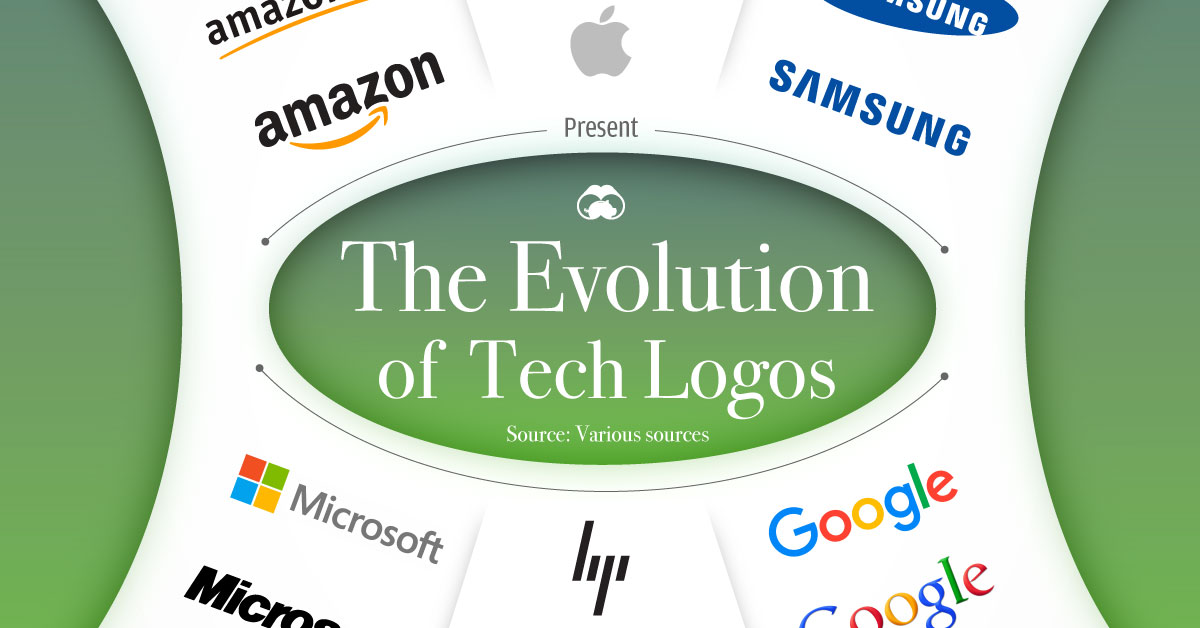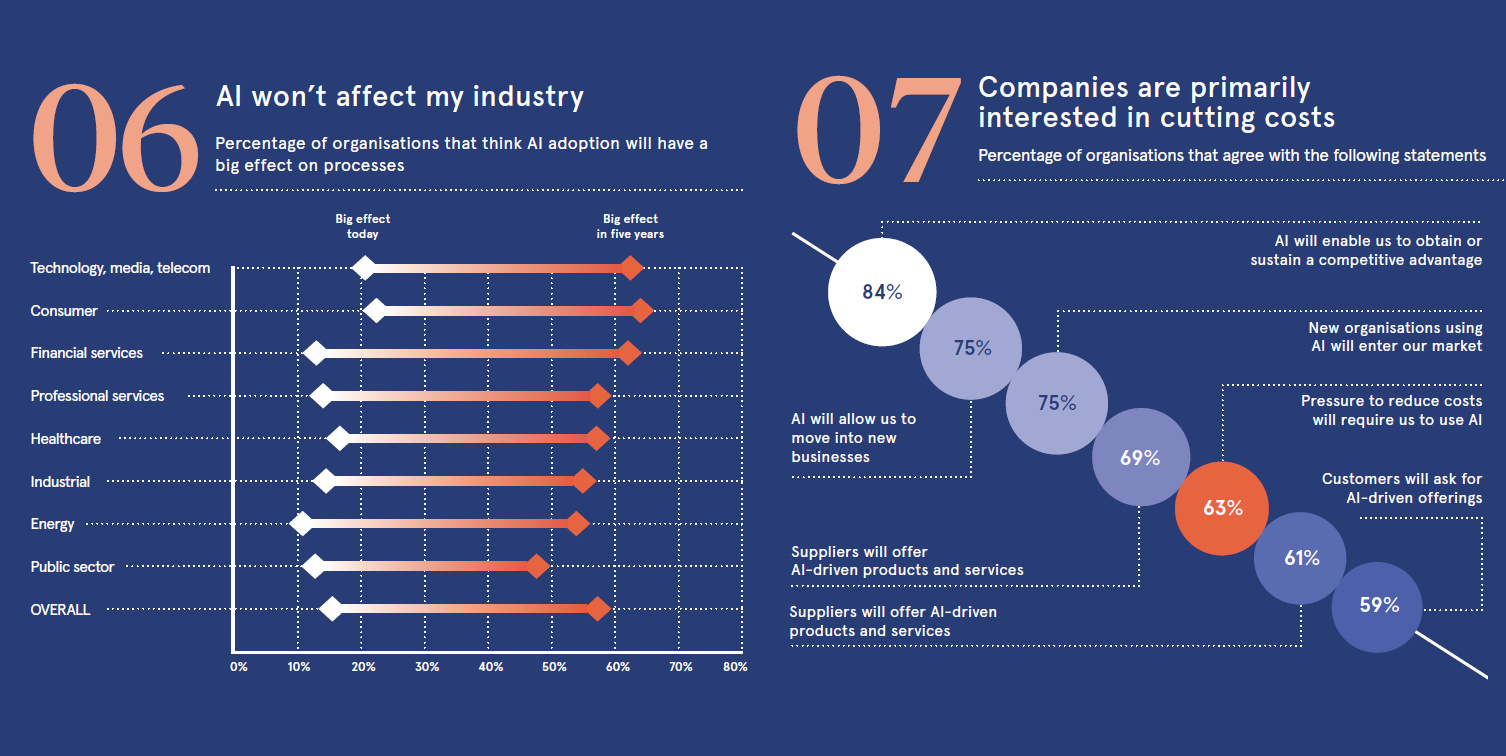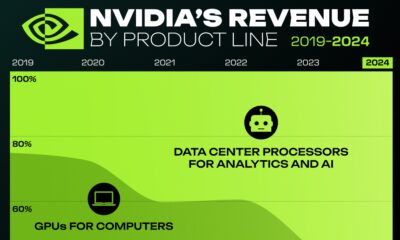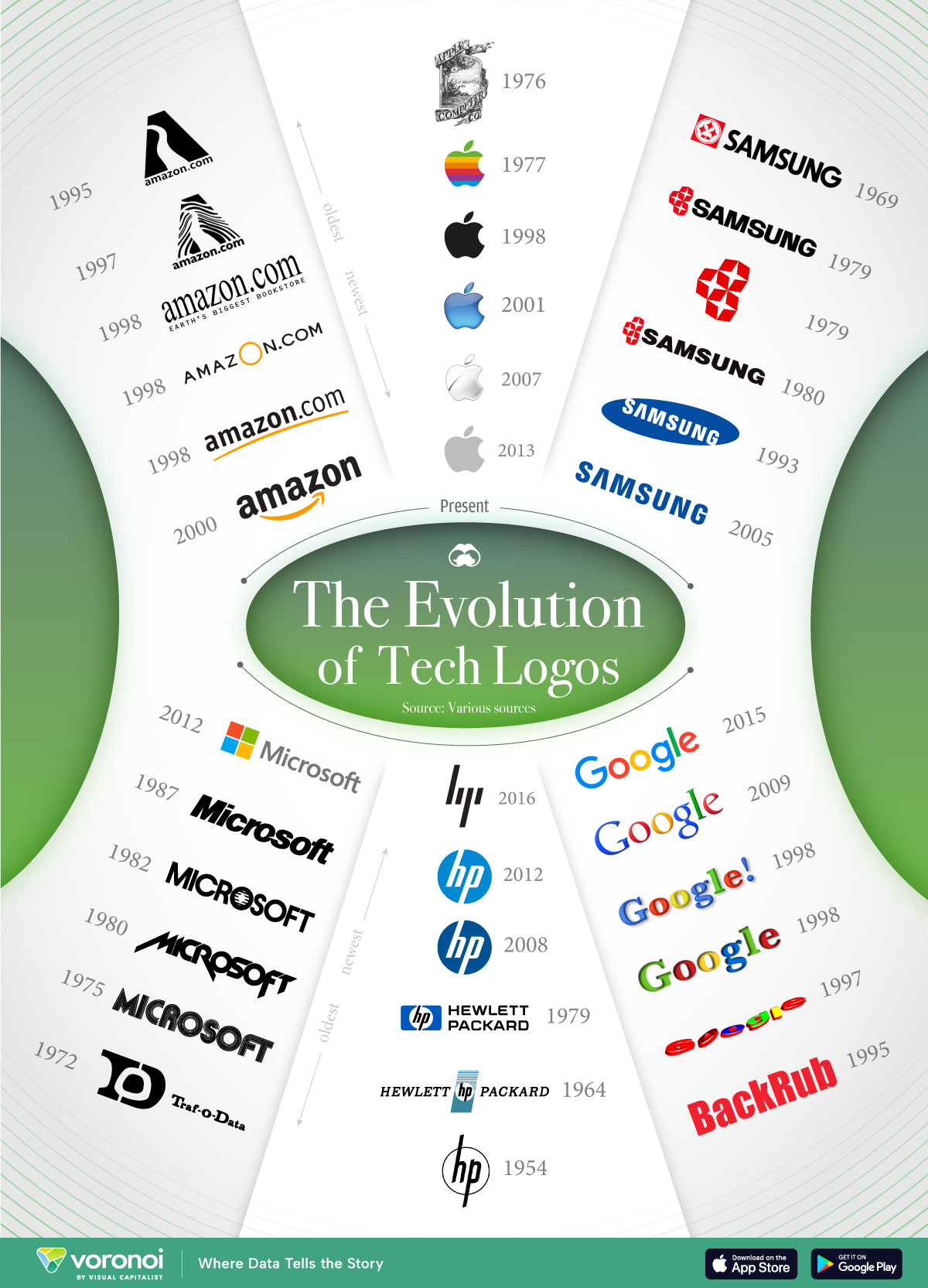Technology
Debunking 8 Myths About AI in the Workplace
The interplay between technology and work has always been a hot topic.
While technology has typically created more jobs than it has destroyed on a historical basis, this context rarely stops people from believing that things are “different” this time around.
In this case, it’s the potential impact of artificial intelligence (AI) that is being hotly debated by the media and expert commentators. Although there is no doubt that AI will be a transformative force in business, the recent attention on the subject has also led to many common misconceptions about the technology and its anticipated effects.
Disproving Common Myths About AI
Today’s infographic comes to us from Raconteur and it helps paint a clearer picture about the nature of AI, while attempting to debunk various myths about AI in the workplace.

AI is going to be a seismic shift in business – and it’s expected to create a $15.7 trillion economic impact globally by 2030.
But understandably, monumental shifts like this tend to make people nervous, resulting in many unanswered questions and misconceptions about the technology and what it will do in the workplace.
Demystifying Myths
Here are the eight debunked myths about AI:
1. Automation will completely displace employees
Truth: 70% of employers see AI in supporting humans in completing business processes. Meanwhile, only 11% of employers believe that automation will take over the work found in jobs and business processes to a “great extent”.
2. Companies are primarily interested in cutting costs with AI
Truth: 84% of employers see AI as obtaining or sustaining a competitive advantage, and 75% see AI as a way to enter into new business areas. 63% see pressure to reduce costs as a reason to use AI.
3. AI, machine learning, and deep learning are the same thing
Truth: AI is a broader term, while machine learning is a subset of AI that enables “intelligence” by using training algorithms and data. Deep learning is an even narrower subset of machine learning inspired by the interconnected neurons of the brain.
4. Automation will eradicate more jobs than it creates
Truth: At least according to one recent study by Gartner, there will be 1.8 million jobs lost to AI by 2020 and 2.3 million jobs created. How this shakes out in the longer term is much more debatable.
5. Robots and AI are the same thing
Truth: Even though there is a tendency to link AI and robots, most AI actually works in the background and is unseen (think Amazon product recommendations). Robots, meanwhile, can be “dumb” and just automate simple physical processes.
6. AI won’t affect my industry
Truth: AI is expected to have a significant impact on almost every industry in the next five years.
7. Companies implementing AI don’t care about workers
Truth: 65% of companies pursuing AI are also investing in the reskilling of current employees.
8. High productivity equals higher profits and less employment
Truth: AI and automation will increase productivity, but this could also translate to lower prices, higher wages, higher demand, and employment growth.
Still worried about AI’s impact on your career?
Here’s a list of 10 skills that will help you survive the rise of the robots in the workplace.
Brands
How Tech Logos Have Evolved Over Time
From complete overhauls to more subtle tweaks, these tech logos have had quite a journey. Featuring: Google, Apple, and more.

How Tech Logos Have Evolved Over Time
This was originally posted on our Voronoi app. Download the app for free on iOS or Android and discover incredible data-driven charts from a variety of trusted sources.
One would be hard-pressed to find a company that has never changed its logo. Granted, some brands—like Rolex, IBM, and Coca-Cola—tend to just have more minimalistic updates. But other companies undergo an entire identity change, thus necessitating a full overhaul.
In this graphic, we visualized the evolution of prominent tech companies’ logos over time. All of these brands ranked highly in a Q1 2024 YouGov study of America’s most famous tech brands. The logo changes are sourced from 1000logos.net.
How Many Times Has Google Changed Its Logo?
Google and Facebook share a 98% fame rating according to YouGov. But while Facebook’s rise was captured in The Social Network (2010), Google’s history tends to be a little less lionized in popular culture.
For example, Google was initially called “Backrub” because it analyzed “back links” to understand how important a website was. Since its founding, Google has undergone eight logo changes, finally settling on its current one in 2015.
| Company | Number of Logo Changes |
|---|---|
| 8 | |
| HP | 8 |
| Amazon | 6 |
| Microsoft | 6 |
| Samsung | 6 |
| Apple | 5* |
Note: *Includes color changes. Source: 1000Logos.net
Another fun origin story is Microsoft, which started off as Traf-O-Data, a traffic counter reading company that generated reports for traffic engineers. By 1975, the company was renamed. But it wasn’t until 2012 that Microsoft put the iconic Windows logo—still the most popular desktop operating system—alongside its name.
And then there’s Samsung, which started as a grocery trading store in 1938. Its pivot to electronics started in the 1970s with black and white television sets. For 55 years, the company kept some form of stars from its first logo, until 1993, when the iconic encircled blue Samsung logo debuted.
Finally, Apple’s first logo in 1976 featured Isaac Newton reading under a tree—moments before an apple fell on his head. Two years later, the iconic bitten apple logo would be designed at Steve Jobs’ behest, and it would take another two decades for it to go monochrome.
-

 Green1 week ago
Green1 week agoRanked: The Countries With the Most Air Pollution in 2023
-

 Automotive2 weeks ago
Automotive2 weeks agoAlmost Every EV Stock is Down After Q1 2024
-

 AI2 weeks ago
AI2 weeks agoThe Stock Performance of U.S. Chipmakers So Far in 2024
-

 Markets2 weeks ago
Markets2 weeks agoCharted: Big Four Market Share by S&P 500 Audits
-

 Real Estate2 weeks ago
Real Estate2 weeks agoRanked: The Most Valuable Housing Markets in America
-

 Money2 weeks ago
Money2 weeks agoWhich States Have the Highest Minimum Wage in America?
-

 AI2 weeks ago
AI2 weeks agoRanked: Semiconductor Companies by Industry Revenue Share
-

 Travel2 weeks ago
Travel2 weeks agoRanked: The World’s Top Flight Routes, by Revenue















